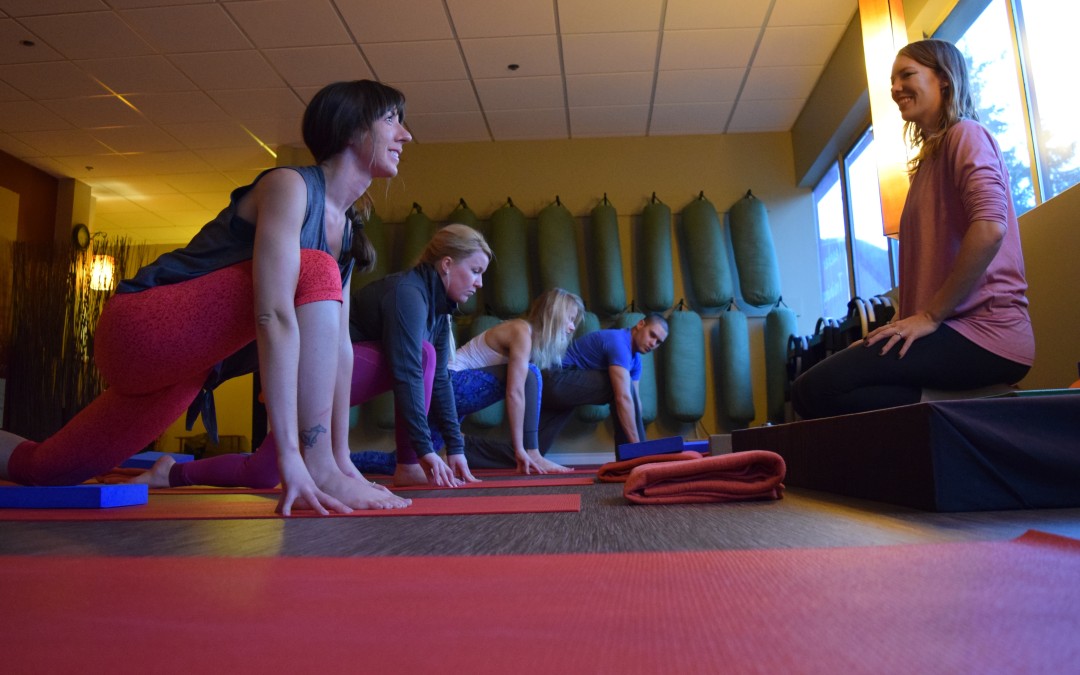You may have heard the term “hip openers” in a yoga class, but what does this really mean? The idea of practicing hip openers can actually mean a lot of different things in a lot of different places. The literal hip joint is located where the femur meets the hip socket, or acetabulum, in the pelvis so naturally many of the hip openers refer to the areas near or around this joint. First we’ll breakdown where this is actually happening and what shapes to focus on so hip openers can benefit your practice.
1.) The Psoas
The psoas is a deep muscles within the hip that tends to hold chronic tightness. This is often the case if you sit in a desk for most of your day but it can also become short and tight with repetitive movements like sit-ups or bicycling. A tight psoas can create an anterior (forward) tilt of the pelvis which results in a postural imbalance that will likely cause pain and limit mobility.
Poses to try:
- Low lunge pose (Anjaneyasana)
2.) The Adductors
Hip openers would not be complete without the adductors. This group of muscles acts to draw the femur (leg bone) closer to the midline. These can easily be activated if you were to actively squeeze your legs together. Stretching the adductors regularly, especially for active people, may help prevent groin strain and injury.
Poses to try:
- Butterfly pose (Baddha Konasana)
- Seated wide legged forward fold (Upavistha Konasana)
3.) The TFL/IT Band
The TFL, or tensor fascae latae, is known as a hip abductor muscle (the opposite action of the adductors) and it assists in stabilizing the pelvis when standing, walking or running. The TFL attaches to the IT band, or Iliotibial band, which is a thick band of connective tissue that stabilizes the knee joint. It’s common to have a tight TFL and IT band especially if you’re an active person but it can negatively impact hip and knee joint health.
Pose to try:
- Pigeon Pose (Kapotasana)
Want to start practicing some hip openers? Check out this short sequence with Emily and join us for a class soon!
